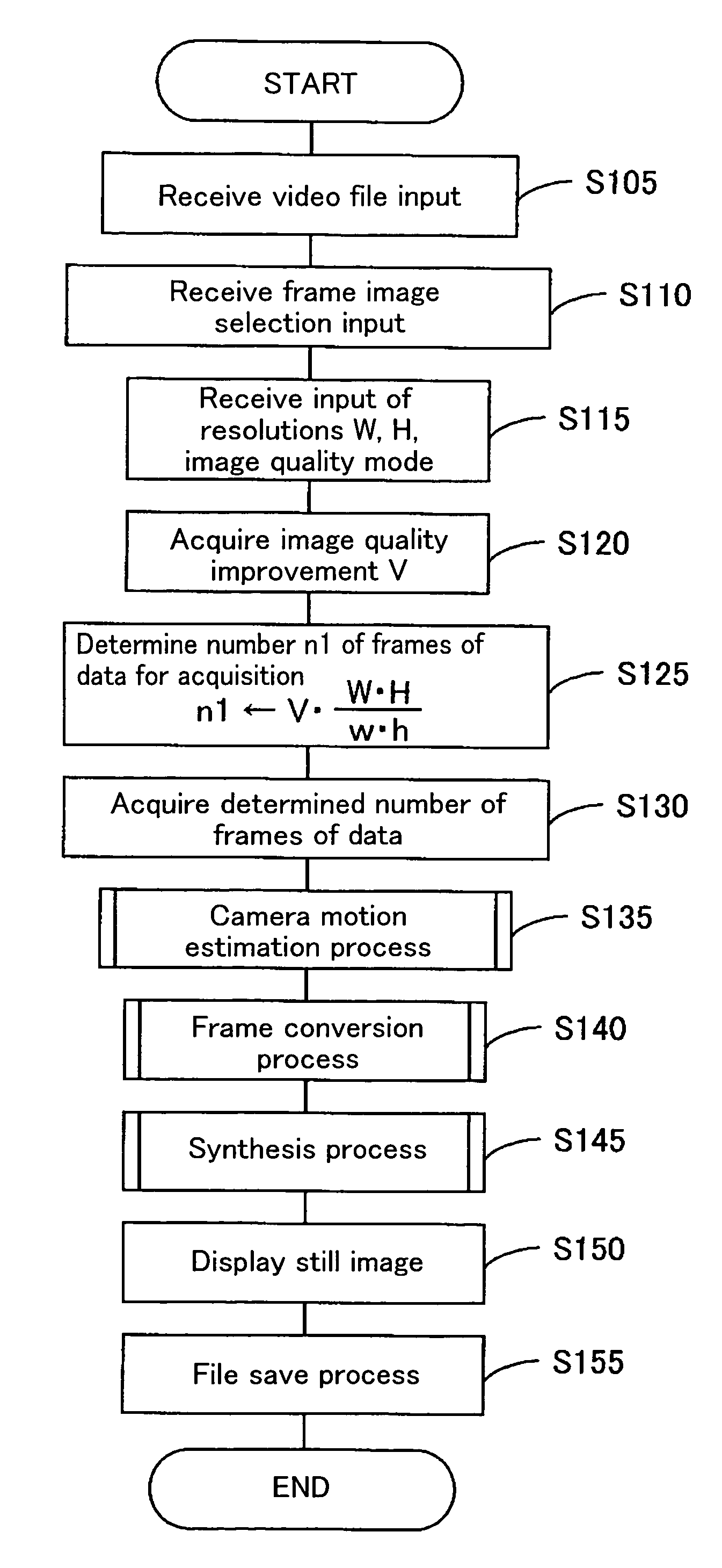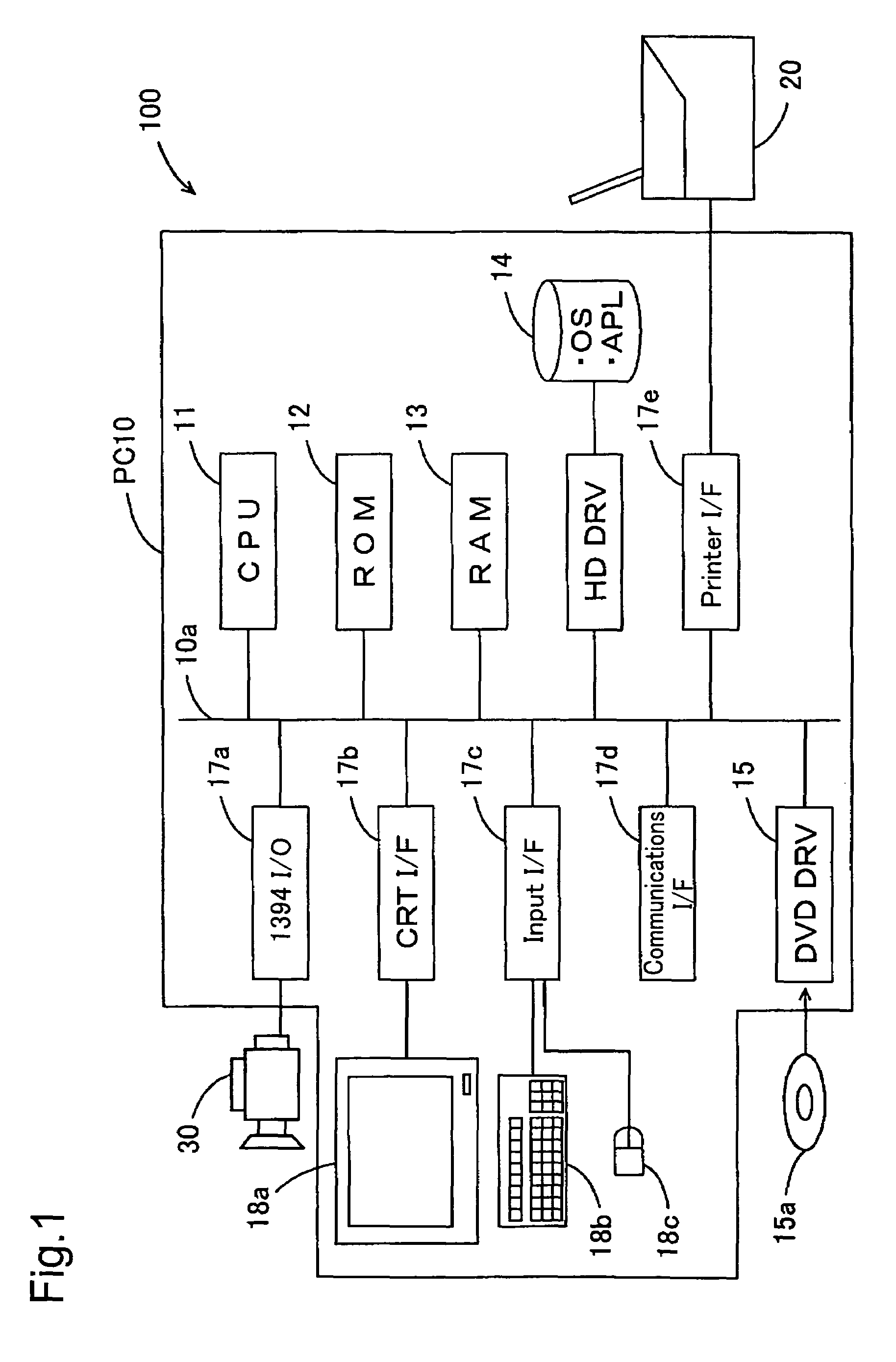Image generating device, image generating method, and image generating program
- Summary
- Abstract
- Description
- Claims
- Application Information
AI Technical Summary
Benefits of technology
Problems solved by technology
Method used
Image
Examples
embodiment 2
(6) Embodiment 2
[0199]In the synthesis process shown in FIG. 17, since the distance MinL(i, f) to the shortest pixel is calculated, the number of frames of data may be determined using this distance.
[0200]FIG. 21 is a flowchart depicting a process performed by the image generating device pertaining to a second embodiment. In this embodiment, processes S505-520 and S540-S550 are performed by frame acquiring module.
[0201]While not shown in the drawing, after input specifying a file name has been received, and a frame image at a certain location where it is desired to generate a still image has been selected, as in S105-S100 of FIG. 11, vertical / horizontal resolution and image quality mode setting inputs are received, and horizontal resolution W, vertical resolution H, and a image quality setting value are acquired (S505). Next, referring the correspondence table shown in FIG. 6, a threshold value TH1 corresponding to the image quality setting value (image quality setting data) is acqu...
embodiment 3
(7) Embodiment 3
[0207]FIG. 22 is a flowchart depicting the process performed by the image generating device pertaining to a third embodiment; and FIG. 23 illustrates by means of a flowchart the synthesis process (2) carried out in S635. First, synthesis process (2) will be described.
[0208]First, a threshold value Lth for shortest pixel distance is acquired (S705). For example, a print interface screen having a predetermined selection field may be displayed, and a parameter indicating threshold value Lth acquired from input into the selection field, and stored in RAM.
[0209]Here, as shown in FIG. 24, the threshold value Lth for shortest pixel distance is a threshold value for determining whether a pixel of frame data is within a predetermined distance from a pixel of interest i. In the illustrated example, threshold value Lth is set to ½ the distance between pixels in the image data being generated. The circles represented by dotted lines centered on pixels, including a pixel of inter...
embodiment 4
(8) Embodiment 4
[0226]FIG. 25 is a flowchart depicting the process performed by the image generating device pertaining to a fourth embodiment; and FIG. 26 illustrates by means of a flowchart the synthesis process (3) carried out in S835. First, synthesis process (3) will be described.
[0227]First, a “0” is placed in a counter nu provided in RAM (S905). Next, in the same manner as in S505-S520 of FIG. 23, threshold value Lth for shortest pixel distance is acquired; a location of a pixel of interest i for generating image data for tone representation of a still image is established, from among all pixels of all frames of data; distances {(xf−x0)2+(yf−y0)2}1 / 2 between pixels at coordinates (xf, yf) neighboring the pixel of interest i, and the pixel of interest i at coordinates (x0, y0) are calculated; and pixels of frames of data for which calculated distance is equal to or less than the threshold value Lth are selected (S910-S925).
[0228]Next, a determination is made as to whether the n...
PUM
 Login to View More
Login to View More Abstract
Description
Claims
Application Information
 Login to View More
Login to View More - R&D
- Intellectual Property
- Life Sciences
- Materials
- Tech Scout
- Unparalleled Data Quality
- Higher Quality Content
- 60% Fewer Hallucinations
Browse by: Latest US Patents, China's latest patents, Technical Efficacy Thesaurus, Application Domain, Technology Topic, Popular Technical Reports.
© 2025 PatSnap. All rights reserved.Legal|Privacy policy|Modern Slavery Act Transparency Statement|Sitemap|About US| Contact US: help@patsnap.com



